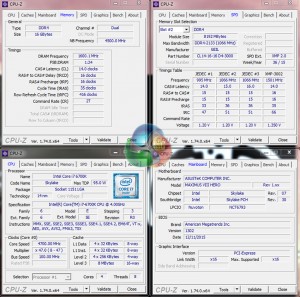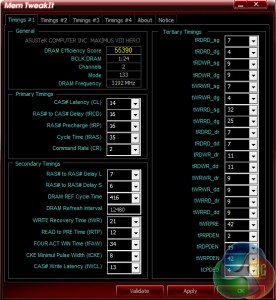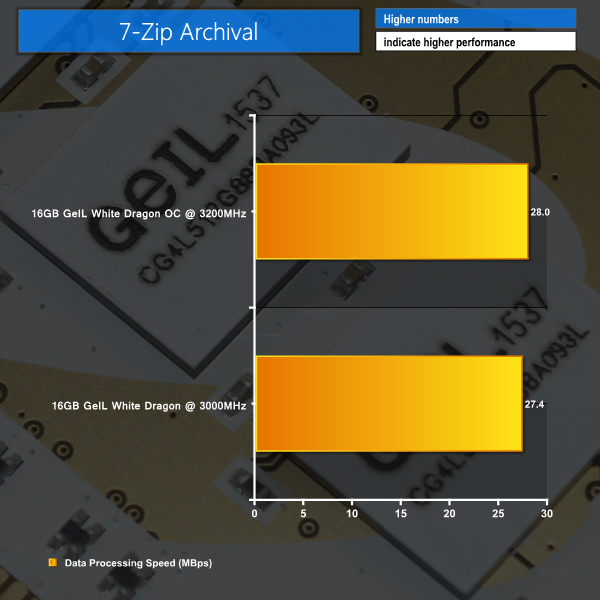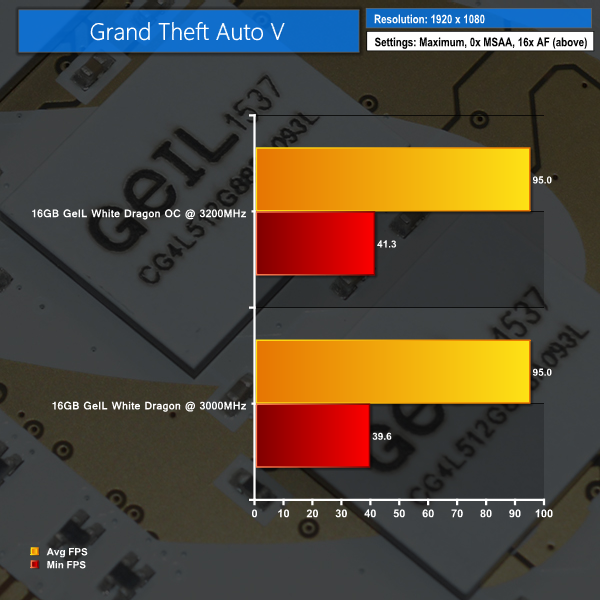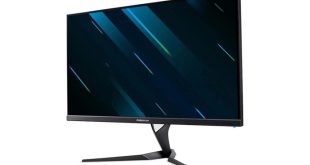We maintained the DRAM voltage at 1.35V and the timings at their 14-16-16-35-2T stock values for the overclocking testing. Our goal is to increase the motherboard dividers and see where GeIL’s memory kit refuses to POST or hold stability in the AIDA64 stress test.
The best stable result that we could achieve was 3200MHz speed with the stock timings of 14-16-16-35-2T.
A 200MHz frequency increase from an already high-speed memory kit is good to see. The small frequency bump, without any change to the timings, results in small improvements for the Cinebench rendering and 7-Zip archival workloads.
Gaming frame rates also show a small benefit from the higher RAM speed, with the minimums recorded through our GTA V benchmarks increasing by around one-and-a-half FPS, on average. While a 4% boost to minimum frame rates is still relatively small, it can quite comfortably be the difference between meeting the 30, 35 or 40Hz lower refresh rate boundary of a FreeSync or G-Sync monitor.
 KitGuru KitGuru.net – Tech News | Hardware News | Hardware Reviews | IOS | Mobile | Gaming | Graphics Cards
KitGuru KitGuru.net – Tech News | Hardware News | Hardware Reviews | IOS | Mobile | Gaming | Graphics Cards


